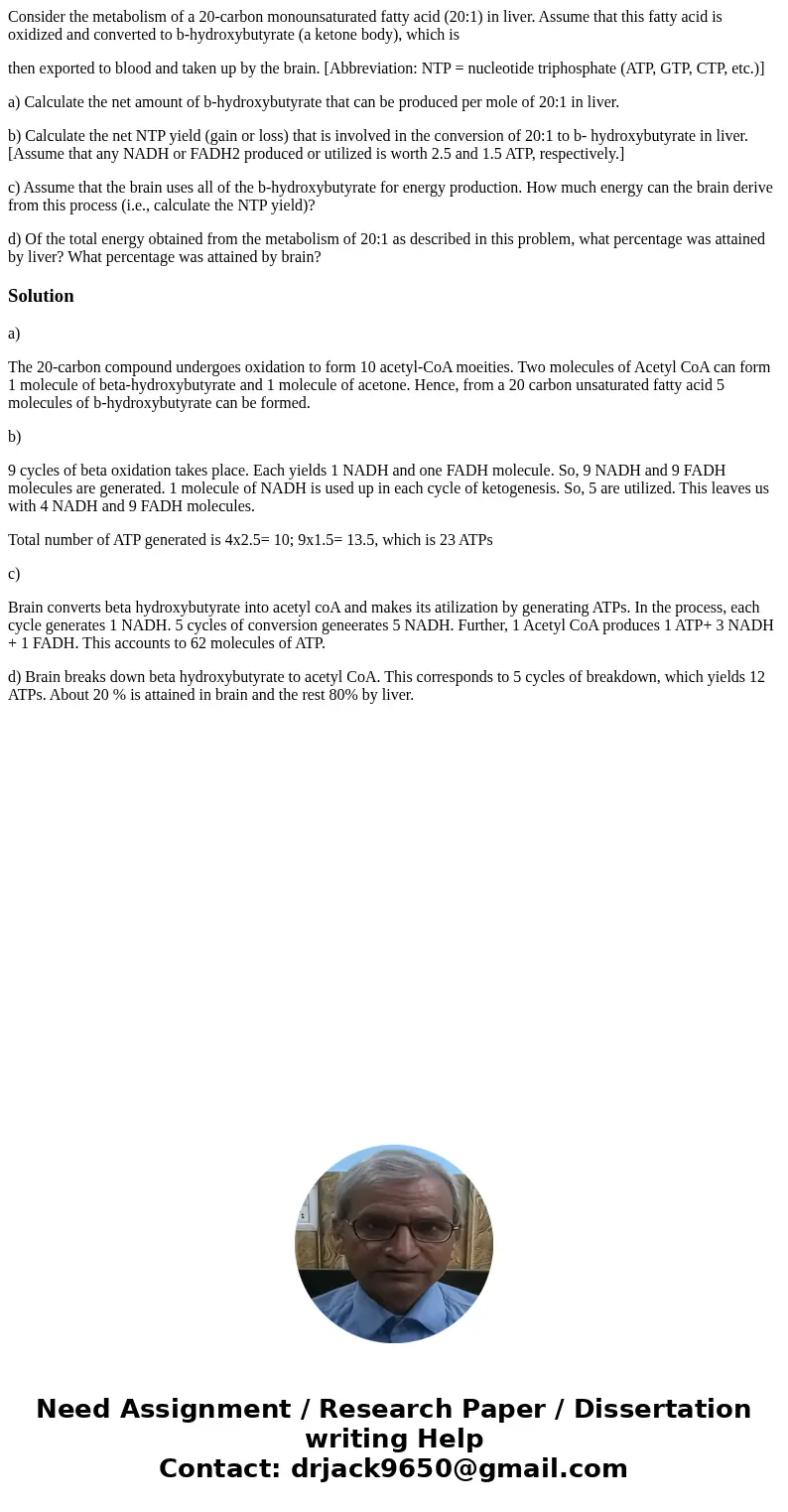Consider the metabolism of a 20carbon monounsaturated fatty
Consider the metabolism of a 20-carbon monounsaturated fatty acid (20:1) in liver. Assume that this fatty acid is oxidized and converted to b-hydroxybutyrate (a ketone body), which is
then exported to blood and taken up by the brain. [Abbreviation: NTP = nucleotide triphosphate (ATP, GTP, CTP, etc.)]
a) Calculate the net amount of b-hydroxybutyrate that can be produced per mole of 20:1 in liver.
b) Calculate the net NTP yield (gain or loss) that is involved in the conversion of 20:1 to b- hydroxybutyrate in liver. [Assume that any NADH or FADH2 produced or utilized is worth 2.5 and 1.5 ATP, respectively.]
c) Assume that the brain uses all of the b-hydroxybutyrate for energy production. How much energy can the brain derive from this process (i.e., calculate the NTP yield)?
d) Of the total energy obtained from the metabolism of 20:1 as described in this problem, what percentage was attained by liver? What percentage was attained by brain?
Solution
a)
The 20-carbon compound undergoes oxidation to form 10 acetyl-CoA moeities. Two molecules of Acetyl CoA can form 1 molecule of beta-hydroxybutyrate and 1 molecule of acetone. Hence, from a 20 carbon unsaturated fatty acid 5 molecules of b-hydroxybutyrate can be formed.
b)
9 cycles of beta oxidation takes place. Each yields 1 NADH and one FADH molecule. So, 9 NADH and 9 FADH molecules are generated. 1 molecule of NADH is used up in each cycle of ketogenesis. So, 5 are utilized. This leaves us with 4 NADH and 9 FADH molecules.
Total number of ATP generated is 4x2.5= 10; 9x1.5= 13.5, which is 23 ATPs
c)
Brain converts beta hydroxybutyrate into acetyl coA and makes its atilization by generating ATPs. In the process, each cycle generates 1 NADH. 5 cycles of conversion geneerates 5 NADH. Further, 1 Acetyl CoA produces 1 ATP+ 3 NADH + 1 FADH. This accounts to 62 molecules of ATP.
d) Brain breaks down beta hydroxybutyrate to acetyl CoA. This corresponds to 5 cycles of breakdown, which yields 12 ATPs. About 20 % is attained in brain and the rest 80% by liver.

 Homework Sourse
Homework Sourse